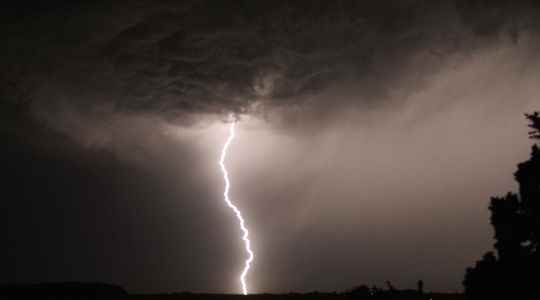From storm chaser memory, he hadn’t seen this for “a very long time”. Yohan Laurito hunts down lightning all year round, camera in hand, guided by the weather forecasts he makes himself thanks to his 35 stations. For the young man, the last few weeks have been exceptional, as his “hunting area” has been extended: “I traveled 5,000 kilometers to photograph lightning. Normally, in the summer, I do 1,500 to 2,000”.
And for good reason: June 2022 turns out to be the worst month ever observed in France. More than 200,000 lightning strikes sounded on the territory, according to Météorage, a subsidiary of Météo France which had never recorded such figures since the start of its observations in 1989. Last month alone represents 73% of first-half lightning activity, with 29 consecutive days of thunderstorms. While lightning is common in the summer, this year it is particularly early.
Increased intensity of thunderstorms
The trigger? The heat wave episode, particularly virulent in mid-June with temperatures reaching or exceeding the 35°C mark in the shade everywhere in France. This intense mass of hot air, in contact with the humidity carried by the Atlantic, generated instability. France was thus at the heart of a very large-scale air mass conflict. A climatic phenomenon that goes hand in hand with the extreme weather conditions of June: precipitation, gusts of wind, giant hailstones but also strong electrical activity. The previous record for lightning strikes was set in June 1993, with more than 170,000 lightning strikes.
Does global warming have its share of responsibility in the resurgence of these meteorological phenomena? While scientists agree on the increase in the severity of stormy episodes, no consensus has been found on that of their frequency. “Some studies anticipate an increase in the frequency of storms, others a downward trend since it takes heat but also humidity to generate a storm”, explains Stéphane Schmitt, expert at Météorage. However, the beginning of the year was marked by a lack of water. According to Météo France, the spring that has just ended is one of the driest since 1959, with a 45% precipitation deficit. And for the coming summer, “the risk of drought will be high”, warns the Bureau of Geological and Mining Research.
Economic impacts
In addition to the human risk – between 50 and 100 people are struck by lightning each year in France – “lightning also has enormous repercussions on the economic world”, recalls Stéphane Schmitt. Example in July 2021, in Brest, where lightning caused a breakdown in the control tower at Brest Bretagne airport. Consequences: diverted or even canceled flights in the middle of summer, when 6,000 passengers were expected. In 2019, storms this time caused the shutdown of the Beznau nuclear power plant in Switzerland for nearly twelve hours. One of the reactors had been hit directly by lightning. Lightning is also the leading cause of failure in telecommunications. Like last June, when the bad weather that swept the Nièvre and the Yonne led to the deficiency of the SFR and Bouygues Télécom telephone networks. 250 shared sites had been damaged.
“We live in a world where electronics takes up all the space. However, many questions remain for the future”, notes the expert from Météorage. Charging stations for electric vehicles, in particular, are very sensitive to atmospheric disturbances.
